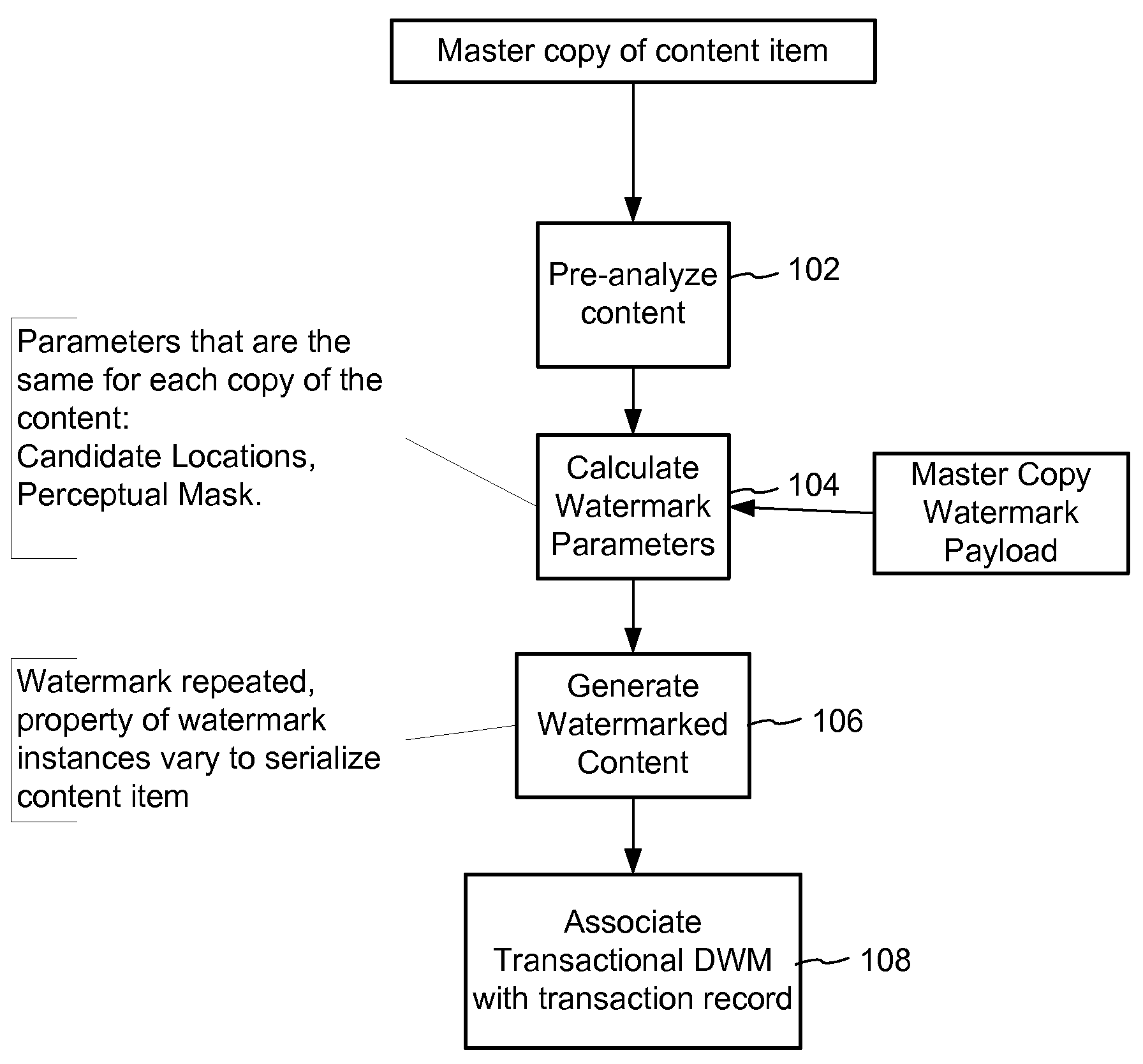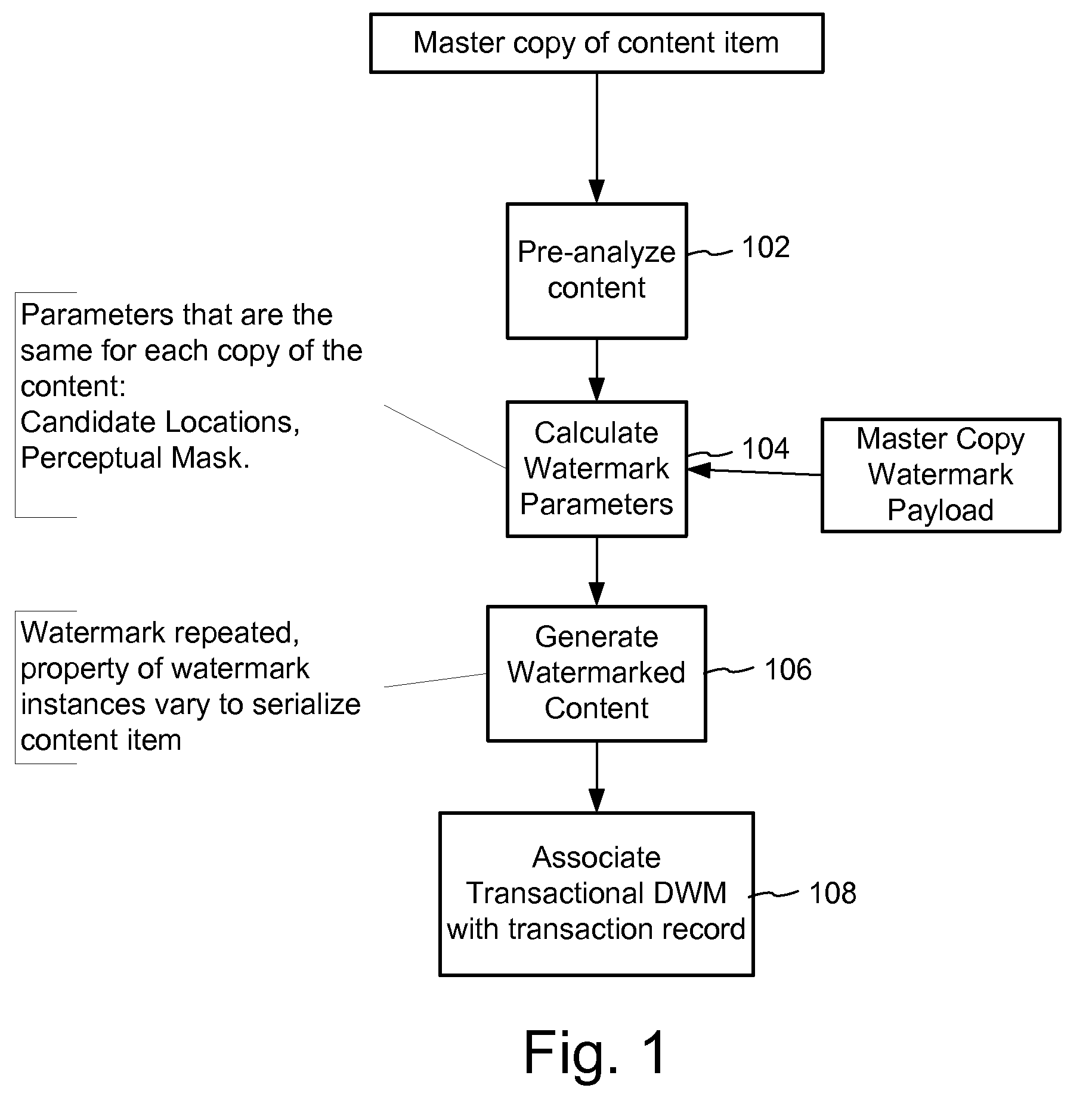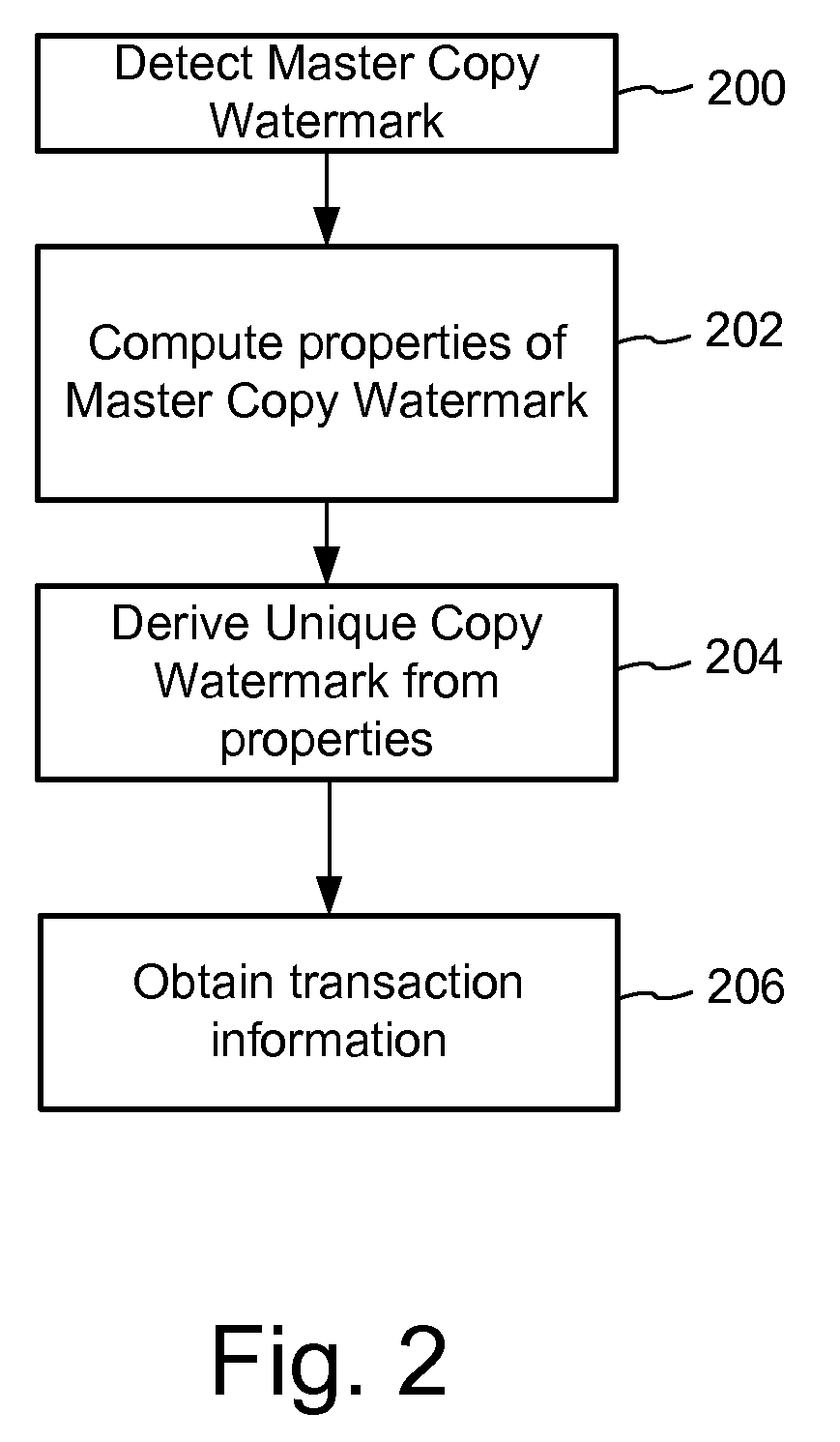Content Serialization by Varying Content Properties, Including Varying Master Copy Watermark Properties
a technology of content serialization and content properties, applied in the field of steganography, data hiding, content fingerprinting and content identification, can solve the problems of adding to the latency of the response to the request, the inability of the transaction information to substantially increase the latency of the transaction, and the need for additional storage to store uniquely serialized copies of the content item, so as to reduce the amount of metadata that needs to be embedded in either master or unique copy watermarks, the effect of reducing the processing tim
- Summary
- Abstract
- Description
- Claims
- Application Information
AI Technical Summary
Benefits of technology
Problems solved by technology
Method used
Image
Examples
Embodiment Construction
[0023]FIG. 1 is a flow diagram illustrating a process for generating a unique copy of a content item by varying the properties of the master copy. The process begins with master copy of a content item, such as a song or video program. In step 102, the process analyzes the content master copy to provide information about the content used for embedding a master copy watermark. This includes information used to divide the content into blocks, information for identifying embedding locations, and / or information for creating a perceptual mask. In step 104, the process takes the desired data string comprising the watermark payload and calculates the watermark parameters for embedding this watermark payload into each of the content blocks at the embedding locations. These parameters may include a perceptual mask for each block, specific embedding locations, and change or substitute values needed to embed the payload in the blocks at the embedding locations. In the case of a compressed conte...
PUM
 Login to View More
Login to View More Abstract
Description
Claims
Application Information
 Login to View More
Login to View More - R&D
- Intellectual Property
- Life Sciences
- Materials
- Tech Scout
- Unparalleled Data Quality
- Higher Quality Content
- 60% Fewer Hallucinations
Browse by: Latest US Patents, China's latest patents, Technical Efficacy Thesaurus, Application Domain, Technology Topic, Popular Technical Reports.
© 2025 PatSnap. All rights reserved.Legal|Privacy policy|Modern Slavery Act Transparency Statement|Sitemap|About US| Contact US: help@patsnap.com



